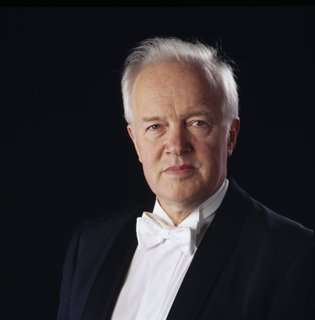|
Back
What is inside a Beautifully Polished Surface? Hong Kong
Hong Kong Cultural Center, Concert Hall
12/03/2009 - & December 4*
Osvaldo Golijov: Last Round
Gustav Mahler: The Song of the Earth
Sasha Cooke (mezzo-soprano), Stephen Gould (tenor)
Hong Kong Philharmonic Orchestra, Edo de Waart (Conductor/Music Director)

E. de Waart (© Bobby Lee)
Since Edo de Waart’s arrival in 2004, Mahler’s symphonies have been among HKPO’s central repertoire. The concerts on Thursday and Friday continued de Waart’s Mahler series by delivering the composer’s final completed work Das Lied von der Erde.
The concert opened with a contemporary composer Osvaldo Golijov’s miniature for string orchestra. Similar to Bartók’s approach, the orchestra was divided into two parts with the double basses at the center, and other string instruments at two sides of the stage. However, the original idea of attracting and repelling between the two violin groups was demolished by the Cultural Center’s poor acoustics. Maestro de Waart was capable of capturing the tango like pulse right at the beginning of the piece, but this was not executed sensitively by the musicians whose playing was lacking harmonious sonority and synchronized rhythmic details. In comparison, the sluggish second movement was more successful, with the jazzy harmonies being rendered by a suave tone as a whole.
This ten-minute tango dance rounded up the first half of the concert. After the intermission, the concert hall was filled with a larger number of audiences; many of them are loyal disciples of Maestro de Waart’s Mahler series.
Like de Waart’s renditions of other Mahler symphonies, the Das Lied von der Erde was a beautifully polished reading, especially at the slow movements. The woodwinds soli in the Der Einsame in Herbst (The Lonely One in Autumn) were particularly intimate and enchanting. They were accompanied by hushed strings with delicate articulations. The texture in the Won der Jugend (Youth), though a little heavy-footed, was so lucid that each voice could be heard clearly.
Both vocalists sung with a rapt lilt and a beguiling sense of light and shade. But tenor Mr. Gould, who was obviously not at his best form, was occasionally overshadowed by the orchestra at some tutti passages. Although he showed a wealth of musical grasp, his feeble voice could hardly depict the music’s spaciousness in the opening movement. On the contrary, Miss Cooke found wonderfully felicitous inflections of dynamics and phrasings, portraying every word with a kaleidoscopic voice. Her tone was glinting at the top and warm at the middle. But it seemed the low register, such as those at the last movement, was not within her comfortable range.
After all, what is really in question was the connotation of the whole interpretation. From the beginning to the end, the Lied was gone through as a plainspoken account. Mahler’s despair and longing were buried amid an understated articulation. The Ewig at the end was given with a sense of calmness without an yearning to the heaven. A heaven that Mahler was about to reach.
Danny Kim-Nam Hui
|